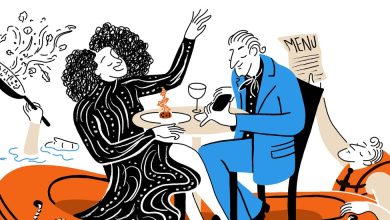Gaddis Smith Dies at 89; Taught History to Generations at Yale

Gaddis Smith, a Yale historian who taught generations of policymakers and politicians the finer points of U.S. foreign policy and who, during the 1970s and ’80s, helped the university navigate between its desire to modernize and the powerful alumni who opposed such change, died on Dec. 2 at his home in New Haven, Conn. He was 89.
His son, Edgar Smith, said the cause was progressive supranuclear palsy, a brain disorder.
Dr. Smith was a Yale institution. He arrived on campus as a freshman in 1950, received his doctorate from the university in 1961, and aside from a short teaching stint at Duke, never left.
He was one of the few professors whose classes were considered informal requirements by undergraduates of any major. Shy in small groups, he blossomed in front of the hundreds of students who packed his lectures.
Among his many fans were the actress Jodie Foster, who studied literature at Yale in the 1980s but considered his course on American foreign policy one of her favorites, and Samantha Power, the administrator of the U.S. Agency for International Development, who wrote her senior thesis under his direction.
“Because he was such a compelling and lively teacher, legions of students crammed into large lecture halls every year to learn from him,” Ms. Power wrote in an email. “Generations of practitioners, teachers and critics of U.S. foreign policy learned how to question received wisdom and old habits in pursuit of a more impactful and humane course.”
He taught both Senator John Kerry and President George W. Bush, and when the two of them ran against each other for the White House in 2004, reporters called Dr. Smith for comment.
He was sufficiently circumspect not to say much, though he did say that Mr. Bush had earned C’s and seemed more interested in social life on campus than the more serious, ambitious Mr. Kerry.
“George Bush had no political visibility whatsoever,” he told The Washington Post in 2004. “He was more like a student from the decade before, the mid-50s, people who enjoyed their fraternity life.”
Dr. Smith knew something about old Yale. His graduating class of 1954 was the university’s last all-white cohort, with just a smattering of Jews — the university was among the last to end its antisemitic quota system. Nor were there any women: Yale did not go coed until 1969.
He came from money, as did most of his classmates, and they studied under professors who considered white male privilege as natural as water, including his mentor, the diplomatic historian Samuel Flagg Bemis.
But Dr. Smith was no prisoner of his time or station. As the university modernized under President Kingman Brewster in the 1960s and ’70s, Dr. Smith — whom Mr. Brewster had appointed master of Pierson, one of Yale’s residential colleges — became a critical interlocutor between upset alumni and the increasingly progressive, diverse faculty and student body.
It was clear where his sympathies lay. He urged the university to bring on more women and people of color as graduate students and faculty, including Diane Kunz, the first woman to teach diplomatic history at Yale. When she was denied tenure in 1996, he tried to get the decision reversed.
“He was my leading supporter,” she said in a phone interview.
Dr. Smith wrote several well-regarded books on U.S. foreign policy, including the seminal “Morality, Reason and Power: American Diplomacy in the Carter Years” (1986). But he never joined a school of thought or espoused a political ideology. If anything, he was something of a soft realist, who urged policymakers to do the best with what they had.
“He was a great synthesizer of history,” said his colleague, near-namesake and New Haven neighbor John Lewis Gaddis. “My favorite book of his is the diplomatic history of World War II, which I read as a graduate student. I was just blown away by the complete clarity of it, but also the concision of it, that he compressed so much into so short a space.”
George Gaddis Smith was born on Dec. 9, 1932, in Newark, N.J., the son and grandson of Yale alumni. His father, George Smith, was a banker with Chase Manhattan, and his mother, Elizabeth (Heller) Smith, was a homemaker.
He grew up in Summit, N.J., a wealthy suburb. At Yale, he served as chairman of The Yale Daily News — essentially its editor in chief — and wrote occasional dispatches from campus for The New York Times.
He received a bachelor’s degree in English literature in 1954 and went directly into the Yale graduate program in history. He taught at Duke for a few years in the late 1950s, but returned to Yale in 1961, the same year he received his doctorate.
He married Barclay Manierre in 1951, during the summer after his freshman year. She died in 2019. Along with his son, Dr. Smith is survived by his brother, Samuel Smith, and two grandchildren. Another son, Tarrant Smith, died in 2020.
As a Yale partisan, he was especially pained by its financial struggles during the 1970s and ’80s. He was rumored to be a finalist for the university presidency in 1986, but lost to Benno Schmidt. He might have been relieved: Mr. Schmidt was forced to make painful cuts, and while Dr. Smith agreed they were necessary, he was also unsparing in his criticism.
“Simply being smaller,” Dr. Smith told The New York Times in 1991, “in itself is not exactly a vision of greatness.”
Dr. Smith helped turn things around as the director of the Yale Center for International and Area Studies, today known as the MacMillan Center. As the locus for international affairs research on campus, it pushed the university beyond its earlier isolation to become a major player in global scholarship.
His background made Dr. Smith a natural choice for his final contribution to Yale, a history of the university. Though his research took longer than he expected and was interrupted by illness, it is scheduled for publication next year.
“I guess it’s the old journalist in me,” he told The Yale Daily News in 2008, “because I can’t stop absorbing.”





